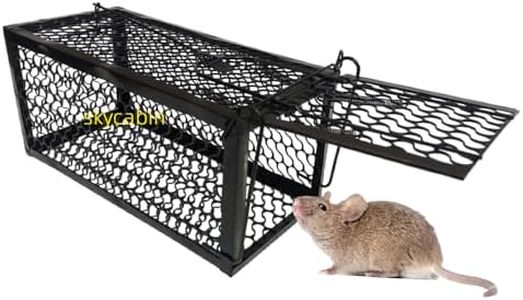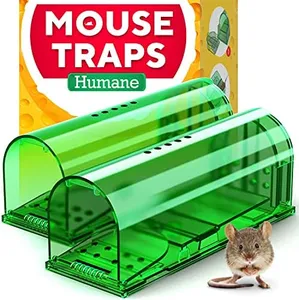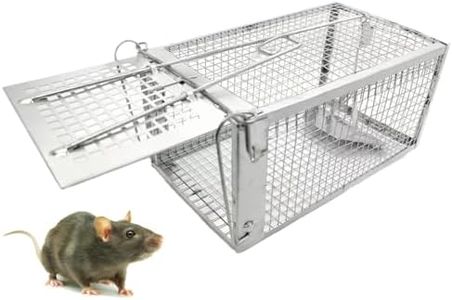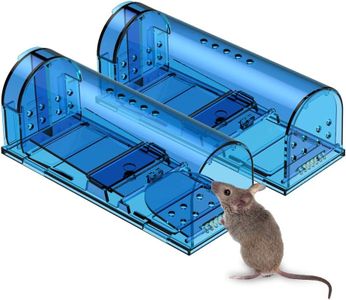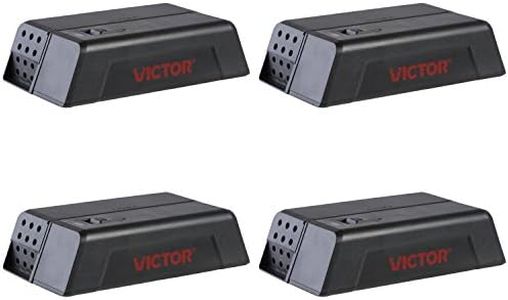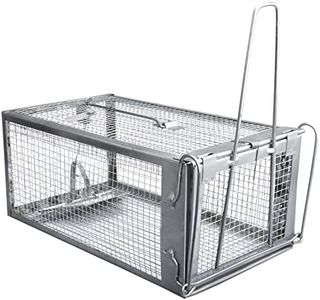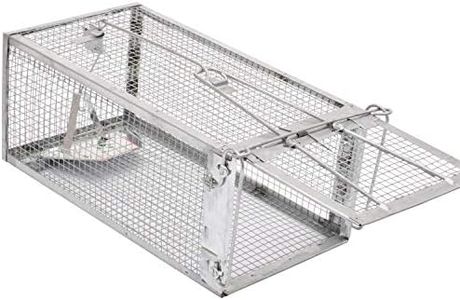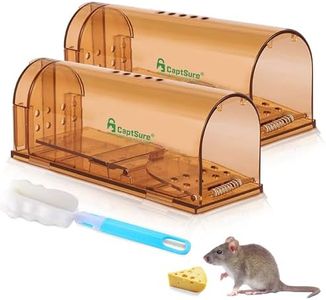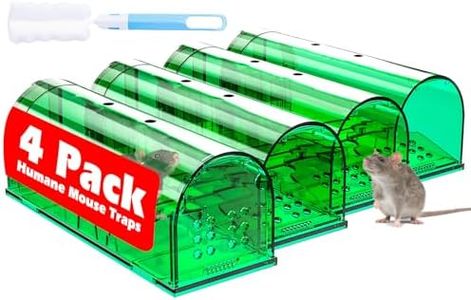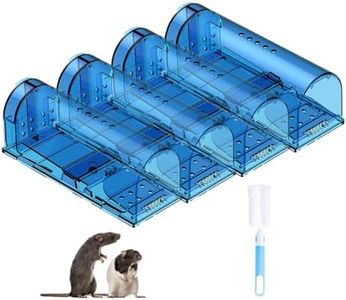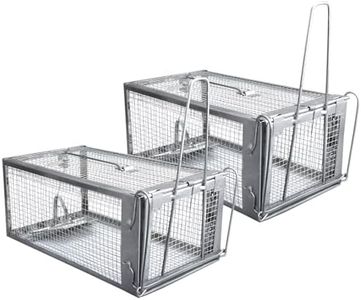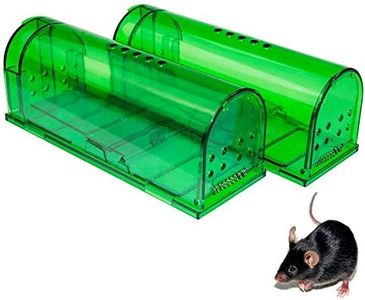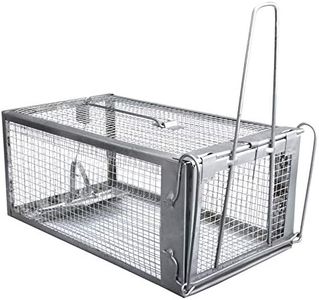We Use CookiesWe use cookies to enhance the security, performance,
functionality and for analytical and promotional activities. By continuing to browse this site you
are agreeing to our privacy policy
10 Best Humane Mouse Traps
From leading brands and best sellers available on the web.Buying Guide for the Best Humane Mouse Traps
Choosing a humane mouse trap is all about safely capturing and releasing rodents without causing them harm. The most important thing is to find a trap that is easy to use, effective at containing mice, and simple to clean, so you can handle it with minimal mess. Consider your living space, the potential for repeat use, and how frequently you expect to interact with the trap. Prioritize humane designs that guarantee the mouse won’t be injured or distressed during capture and release.Trap MechanismThe trap mechanism refers to the way the trap catches and contains the mouse. This is important because you want a system that quickly and gently traps the mouse without hurting it. Common types include sliding doors, spring-loaded doors, and gravity doors. Sliding and gravity doors tend to be quieter and less stressful for mice, while spring-loaded versions are fast but may be more startling. If you want the least stressful capture, look for designs that work smoothly and minimize noise or sudden movement. For repeat use, choose a sturdy and simple mechanism that won’t jam or break easily.
Size and CapacitySize refers to the overall dimensions of the trap and how many mice it can hold at once. This matters because a trap that is too small may not fit all rodents or could lead to overcrowding if you have more than one mouse. Traps typically range from single-catch (one mouse at a time) to multi-catch options (several at once). If you suspect only occasional mouse visitors, a single-catch trap is enough. If you have a persistent issue or need fewer re-settings, a multi-catch trap is more convenient. Make sure the trap is large enough for the common mouse species in your area.
Ventilation and VisibilityVentilation is all about airflow inside the trap, which is crucial for the mouse’s well-being while trapped. Good ventilation prevents stress and suffocation, especially if you might not check the trap immediately. Visibility refers to whether you can easily see if the trap has caught a mouse. Some traps are transparent or have inspection windows, letting you check status without opening them. Choose traps with multiple air holes or slits for ample airflow, and consider a clear design if you prefer to see results without handling.
Ease of Use and CleaningThis spec is about how simple it is to set, empty, and clean the trap after use. Easy-to-use traps have fewer parts, clear instructions, and can be baited or emptied without too much fuss. For cleaning, smooth plastic or metal surfaces are better than textured ones, as they don’t hold odors or germs as much. If you want to minimize time spent on maintenance, look for traps that open fully for release and quick washing, ensuring each use is hygienic for both you and the animal.
Material and DurabilityMaterial means what the trap is made of—commonly plastic, metal, or a combination. Durability matters for how long you can reuse the trap and how it stands up to repeated washings or outdoor exposure. Plastic traps are lightweight and rust-proof, but can crack over time. Metal ones are sturdy and long-lasting, but they may rust if left wet. If you plan frequent usage or outdoor placement, aim for high-quality materials that are resistant to weather and easy to handle, ensuring both safety and longevity.
